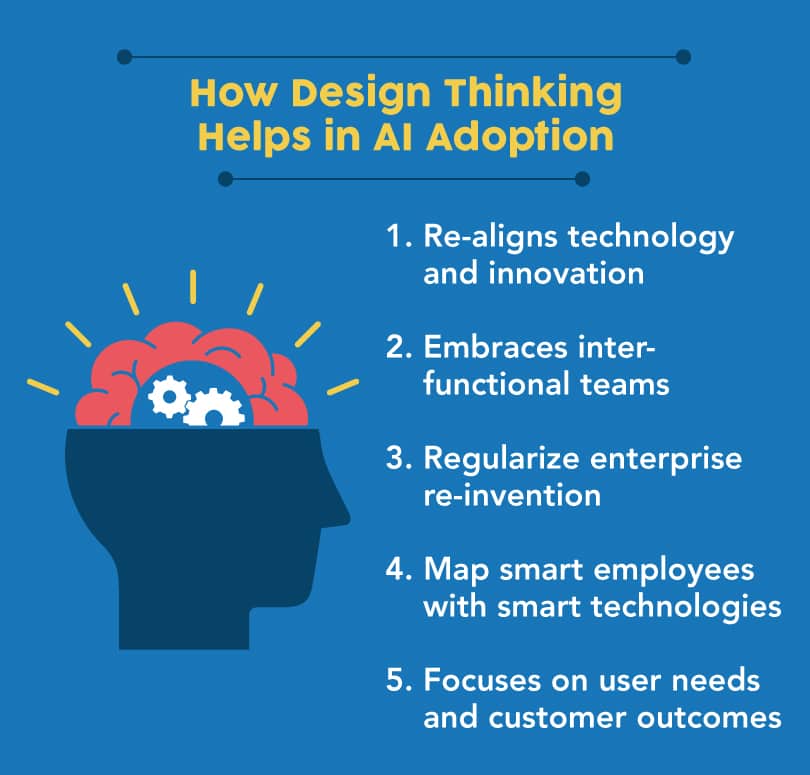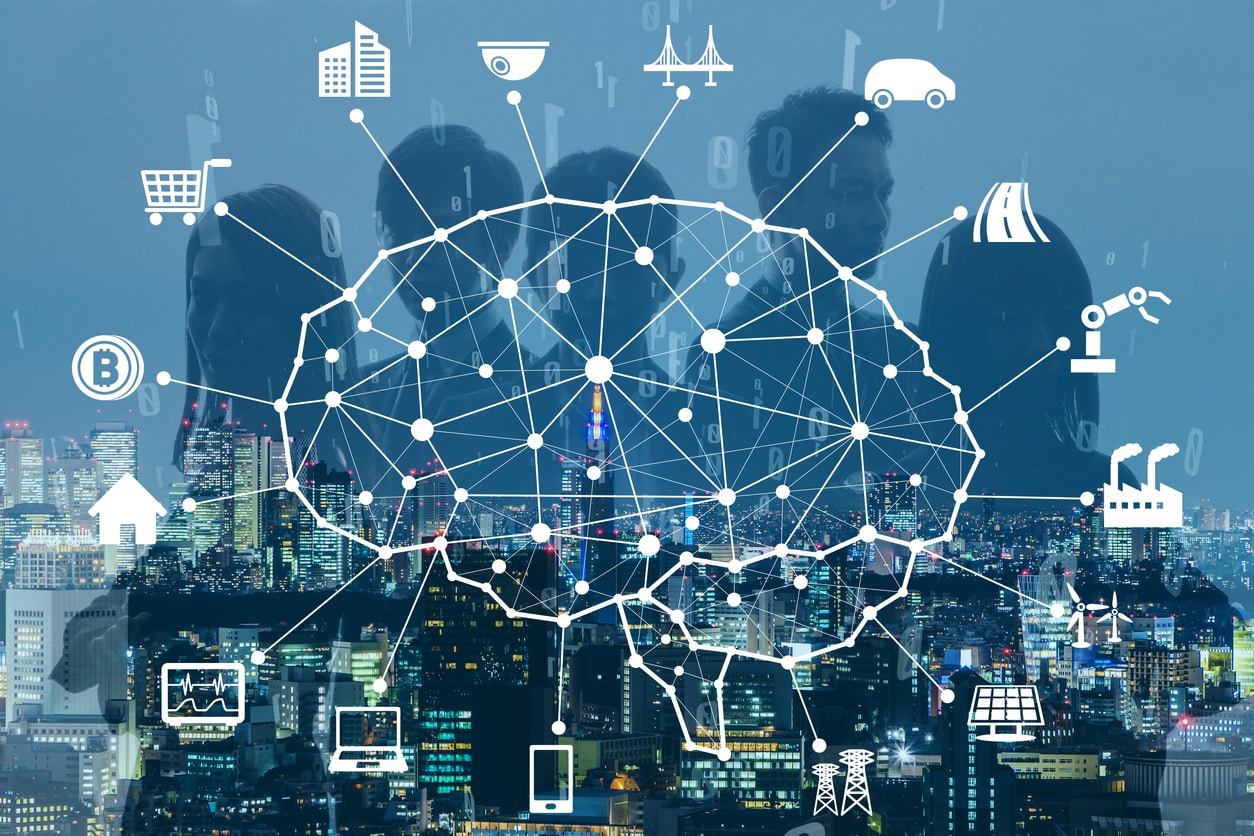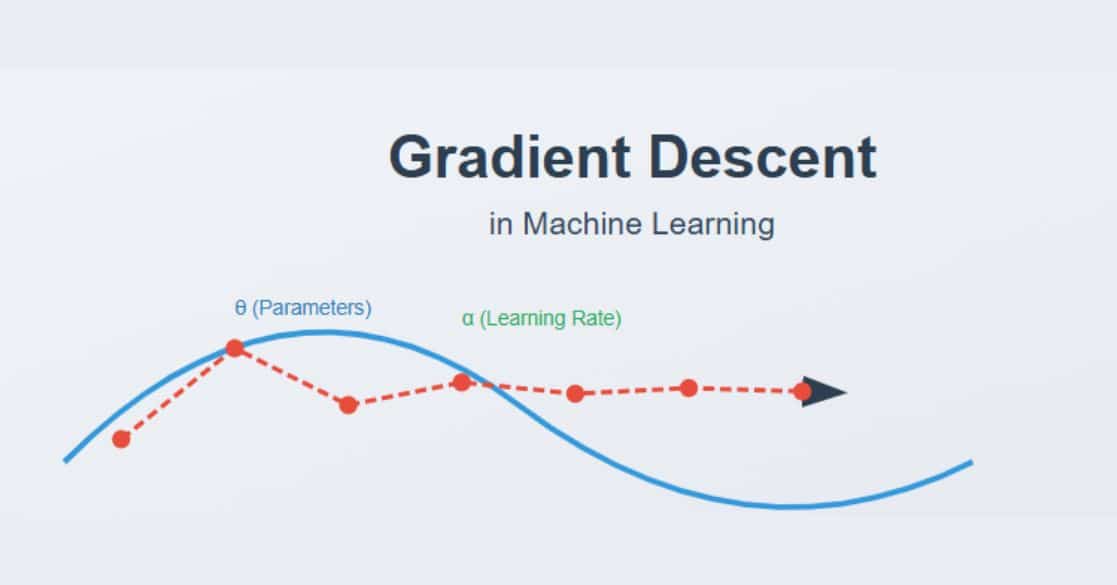- Artificial Intelligence (AI) Top Industries
- Top industries and application areas of Artificial Intelligence in India
- Artificial Intelligence Major Industries
- The Role of Desing Thinking in Artificial Intelligence Applications
- The Challenges in AI Adoption
- Know the Design Thinking Process
- A Favourable Environment For Design Thinking Approach
- Design Thinking is The Way Forward
2022 has been a year of drastic improvements in the field of Artificial Intelligence. It also witnessed a great deal of acceptance from the customers. 41% of the customers believe that AI will improve the quality of life in some way or the other. 33% believe that they are already using artificially intelligent applications or platforms.
This gives organizations a sense of confidence in their products and operations that incorporate Artificial Intelligence at their core. In this section, we highlight the top industries where AI has gained popularity and the top application areas of Artificial Intelligence in each of these industries.
Artificial Intelligence (AI) Top Industries
Improvement in the state of healthcare system holds immense importance as it directly reflects on critical aspects such as quality of treatment, life expectancy, etc. Artificial Intelligence is playing a major role in improving diagnostics, minimally invasive surgical procedures, drug development, better patient monitoring, and getting actionable insights into patients’ real-time needs. These are just some of the many applications of AI in healthcare. Mentioned below are some critical application areas of artificial intelligence that are helping save lives.
Enlitic, a California based AI organization that develops ‘deep learning’ based tools to streamline radiology diagnosis. The deep learning platform analyses the unstructured data such as blood tests, radiology images, genomics, EKGs, etc. along with complete patient medical history. It then provides medical practitioners with actionable insights based on this data to understand patients’ real-time needs.
Enlitic has been named the 5th smartest AI company in the world by MIT. It has left behind Facebook and Microsoft in the said ranking.
Named the ‘Most Innovative Healthcare AI Developments of 2019’, BioXcel Therapeutic’s work in AI-based drug development is phenomenal. The company uses AI to identify and develop new medicines in the domain of neuroscience and immuno-oncology. They also work towards finding new applications for existing drugs with the help of AI.
There are many organizations that are working towards improving the diagnosis of cancer detection and successfully working towards improving the rate of cancer detection at earlier stages to reduce cancer-related deaths. Many companies are also working towards finding a cure for cancer in the early stages.
Artificial Intelligence is revolutionising the healthcare industry by supporting and at times automating complicated medical processes and procedures efficiently. Prevention is better than cure – only that AI is enabling not only prevention but also cure. From diagnosis to treatment, AI is fuelling medical miracles more than ever. Timely detection of diseases through an analysis of historical data (individual and family medical records) is one of the main achievements of AI. Whether it is cancer or any kind of heart disease, AI operated consumer wearables and screening systems are keeping users informed about their general state of health. AI systems are reviewing and storing medical data faster and more efficiently than humans besides deriving significant insights from that data. In recent times, AIML is also powering end-of-life care – the phase when humans are increasingly ailing, lonely and are in need of care. Humanoid designs along with AI advancements are helping people stay healthy and independent for a longer period of time.
Narayana Health, one of the most trusted healthcare providers in the country, believes that artificial intelligence and data analytics is the way to go if you want to provide an affordable and quality service to an overpopulated nation. Watch the following video to find out how they plan on doing that.
Agriculture
It has been stated that our planet would need 50% more food than being produced today by the year 2050. And once again, AI could be the solution to this challenging task.
PEAT is a Berlin-based start-up that has successfully designed and developed an AI application software for analysing the nutrient profile of the soil. It can achieve this by merely scanning through the images of the soil, without even physically examining it in any way.
Some of the ways they are helping solve the problems of the agriculture industry are by enabling higher production and reduced operational cost and increasing the efficiency of cultural practices.
Apart from the information regarding the soil profile, the new age IoT-based AI modules assist with applications of climate prediction, crop management practices, fertilizer optimization, and organically nurtured produce.
Finance
Artificial Intelligence has found many applications in the Finance industry. These applications are being widely used across organisations to up their game and grab a larger chunk of market share. Some of the applications lie in credit decisions, managing risk, fraud prevention, quantitative trading, personalised banking, process automation and much more.
ZestFinance has come up with Zest Automated Machine Learning (ZAML). It is an AI-powered underwriting platform that is helping finance companies to assess the credibility of borrowers with little or no credit history. Thousands of data points are used to provide a level of transparency that other underwriting solutions fail to provide. ZAML is an end to end platform which is easily scalable.
Similarly, there are many other start-ups that are coming up with AI solutions to transform the traditional ways prevailing in the industry.
Accounting professionals are increasingly getting drawn to artificial intelligence for fraud detection and predictive analysis. Apart from streamlining professional routines like data entry and reporting, AI is also being used for data-backed decision-making. The financial industry is embracing AIML for all the right reasons. From supporting customers with automated communication to managing wealth and insurance, AI is paving the way for the accounting industry to become more error-free and precise in all its execution. Reports show that predictive analysis, in particular, has improved overall business strategy, sales nurturing, revenue generation and resource optimisation for various firms in the past years.
Need a better understanding on how Artifical Intelligence in Finance sector.
Space and Aeronautics
Artificial Intelligence has paved its way into extraterrestrial exploration and helping space scientists to find hints of life on other planets. It is being considered to send artificial Intelligence bots to other planets to conduct studies on the presence of life, based on the climatic activities and presence of natural resources around.
Another application lies with managing the humongous amount of data that is received from satellites. The significant amount of data gathered by NASA from these satellites is in the form of ocean currents, volcanic activity, ic states, and a bird’s eye view of what is happening on the Earth. The millions of bytes of raw data are organised and processed into data sets which is a tough task given the volume of data. The Advancing Collaborative Connections for Earth System Science (ACCESS) researchers use the latest machine learning and data transmission for different aspects of data management.
3. Exploring Renewable Energy
With the global energy crisis rising every year, we have no choice but to turn to smart energy usage. Artificial intelligence and machine learning help to estimate usage and store energy accordingly. Power grids are drawing energy from all renewable and sustainable sources like wind, solar, water and more. However, managing and running these grids effectively often becomes a challenge, considering the fluctuations of these energy sources. AI systems can stabilise these systems by analyzing relevant data. AI tools like Google Sunroof calculate the impact of solar energy in households across the United States to optimise energy generation and conservation. This model which uses weather data, utility electricity rates, 3D modeling and shade calculations, saves money apart from energy.
Reuters investigates how India is using AI to solve the renewable energy crisis, and how other nations can take cue from this example.
4. Hiring Platforms and Systems
With companies trying to tap into the global workforce and employees opting for a more flexible work model, it becomes a challenge to connect hiring companies with job seekers. Worse still, companies waste a lot of time interacting with candidates who are not the right fit for the role. Artificial intelligence and machine learning provides solutions for these bottlenecks in the hiring industry. AI-powered hiring tools find candidates who are more likely to fit into a role. Whether it is experience, qualifications or availability, AI algorithms match profiles with requirements, making it easier for hiring companies to reach out to the right candidates. AI in recruitment is not limited to just automated sourcing, but its use extends to candidate rediscover, candidate matching, freelancer management, diversity hiring, referral management and more. AI is expected to further help recruitment procedures in the years to come with even more developed algorithms.
Top industries and application areas of Artificial Intelligence in India
India has witnessed substantial growth in the number and size of Artificial Intelligence start-ups. Many small and mid-size companies are flourishing and thriving the very challenging field of AI with their unique and promising solutions.
For many years now, cities like Bengaluru, Pune, Chennai, and Coimbatore among others have spawned many micro-industries. This is the reason behind these startups venturing into industrial AI in India.
Tarun Mishra, co-founder of DeTech Technologies says, “India is known for its software prowess and we have the talent and capabilities in machine learning, computer vision, and deep learning. The next level is building the AI layer on top and India is front-ending this revolution.”
Some of the major industries that are opening up to AI applications are healthcare, Defense, and commercial space. Let us have a look at some of the top companies and research institutes in 2019 that are applying Artificial Intelligence to solve real-world problems.
Artificial Intelligence Major Industries
Healthcare
Niramai: Thermalytix by Niramai is a fusion of sophisticated Machine Learning algorithms to automate the process of analysing thermal images. It is an AI-powered diagnostic engine with a high-resolution thermal sensing device and a cloud-hosted analytics solution for the analysis of thermal images identified. The SaaS solution helps with early and accurate breast cancer screening.
National eHealth Authority (NeHA) – National eHealth Authority is a government initiative and acts as a regulatory body for setting standards in the healthcare sector. The vision of this organisation is to attain high quality and cost-effective health services for all Indians. It is an integrated health information system to promote setting up of state health record repositories and Health Information Exchanges (HIEs). The goal is to set up a data management system, privacy policies, guidelines, and health records of patients. The health records are monitored with the help of AI for the better cure of patients.
Cognitive Science Research Initiative (CSRI) – This initiative uses AI to overcome challenges related to cognitive disorders and related social issues. Some of the tools used are psychological tools, early diagnosis, and better therapies, rehabilitation programs, and intervention technologies all using AI.
Revolutionizing Healthcare: The Impact of Artificial Intelligence
Artificial Intelligence (AI) is revolutionizing the healthcare industry, providing new and innovative ways to improve patient care and streamline medical processes. In this article, we will explore what AI in healthcare is, how it can make a difference, the applications driving its growth, the benefits it brings, and the challenges facing its adoption.
Now let’s understand what is Artificial Intelligence in Healthcare and how can it make a difference.
Artificial Intelligence is a branch of computer science that creates intelligent machines that work and learn like humans. In the healthcare industry, AI analyses large amounts of data, such as medical records, diagnostic images, and lab results, to help doctors make more accurate diagnoses and better treatment decisions.
AI can make a significant difference in healthcare by reducing the time and costs associated with specific medical procedures, improving the accuracy of diagnoses, and providing personalized treatment plans.
For example, AI-powered diagnostic tools can quickly analyze medical images, such as X-rays and CT scans, to help doctors identify potential health problems faster and more accurately. Also, many AI driven Question & Answer platforms assist patients in getting answers to their medical queries with help of professional doctors.
In addition to this, AI can analyze patient data and identify patterns that may indicate a higher risk of certain diseases, allowing doctors to take preventative measures before a problem develops.
Now, let’s delve deeper into understanding which AI Applications are driving the growth of the Healthcare Industry
Several AI applications are driving the growth of the healthcare industry, including:
- Diagnostics: AI-powered diagnostic tools can analyze medical images and lab results to help doctors identify potential health problems faster and more accurately.
- Electronic Health Records (EHRs): AI can analyze patient data and identify patterns that may indicate a higher risk of certain diseases, allowing doctors to take preventative measures before a problem develops.
- Clinical Decision Support Systems (CDSS): AI-powered CDSS can provide doctors with real-time information and guidance to help them make more informed treatment decisions.
- Robotics: AI-powered robots can assist with surgical procedures, providing doctors with greater precision and control.
Artificial Intelligence (AI) has the potential to revolutionize the healthcare industry by improving the efficiency, accuracy, and effectiveness of medical treatments and diagnoses. However, despite this potential, there are several challenges facing the adoption of AI in healthcare.
Some of these challenges include:
- Data Quality and Access: AI relies on large amounts of data to learn and make predictions. However, many hospitals and clinics need help with data quality and access, making it difficult for AI systems to function effectively.
- Lack of Expertise: AI requires specialized knowledge and expertise to develop and implement, which can be challenging for hospitals and clinics that need more resources.
- Privacy and Security: AI systems handle sensitive patient information, making privacy and security a concern. Hospitals and clinics must ensure that AI systems comply with regulations and that patient data is protected from breaches and cyberattacks.
- Costs: Developing and implementing AI systems can be expensive, which can be a barrier for smaller hospitals and clinics.
- Lack of Trust: AI systems are only sometimes fully understood by healthcare professionals, which can lead to a lack of trust in the technology.
Despite these challenges, the healthcare industry continues to invest in AI, recognizing its potential to improve patient care and streamline medical processes. With continued advancements in technology, AI in healthcare is expected to become more widely adopted, and its future is expected to be bright.
Defence
Multi-agent Robotics Framework (MARF): This is an AI-powered multi-layered architecture that provides a plethora of military applications. It will enable collaboration among the various kinds of robots that the Indian military has already built. Some of these are Snake Robot, Legged Robot, Wheeled Robot with Passive Suspension, Wall-climbing Robot, and Robot Sentry among others.
Unmanned Systems for Military Operation: Artificial Intelligence is helping in developing unmanned military operation systems for the different terrain types of the country. Extensive research is being done in locomotion technologies to achieve a breakthrough in this technology.
Commercial Space
Rivigo: It is a true AI-enabled logistics company in the commercial space. They use AI and ML to prevent fuel pilferages using geofencing techniques and geostatistical modelling. They also use the Internet of Many Things (IoMT) sensors to monitor and analyse human behaviour and prevent collisions.
Netradyne: Uses AI and deep learning to ensure driver safety with Driveri. It is an assistance and monitoring device with Quad HD cameras, GPS, LTE, gyrometer, accelerometer, and most importantly a deep learning processing unit.
Research in AI fields at ISI, Kolkata
The Machine Intelligence Unit (MIU): The machine intelligence unit, abbreviated as MIU carries out research in various aspects of machine intelligence. It takes into account the advanced technologies like artificial neural networks, fuzzy logic, genetic algorithms, fractal and rough sets etc. to convey the core concepts of machine learning and pattern recognition for industrial applications.
Currently, the department is developing these technologies individually and in an integrated manner. The objective is to solve various problems in image processing, pattern recognition, data mining, brain modelling, among other applications related to the design of intelligent systems.
The Computer Vision and Pattern Recognition Unit (CVPR): The department is pioneering the development of an Optical Character Recognition system (OCR). The system recognizes the Bangla and Devanagari scripts and performs various functions on these scripts. It performs document tilt correction, word and character segmentation, character recognition, script line, and ultimately error correction. The system functions at 98% accuracy which is outstanding.
The Role of Desing Thinking in Artificial Intelligence Applications
To lead innovations in Artificial Intelligence, the C-suite executives will have to apply design thinking to develop coordination among cross-functional teams. Design thinking principles and process inspires employees to ask questions and probe deeper into the problem statement and its possible solutions. It also diminishes hierarchy, creates an environment that challenges the status quo, and encourages smart risk-taking. With design thinking, organisations can accelerate their AI adoption process and reduce the resistance to change. When design thinking is deeply embedded in an organisation’s culture, it becomes easier to adapt to the changing market conditions.
The Challenges in AI Adoption
The biggest challenge in adopting Artificial Intelligence is that there is no universally accepted approach that draws the process outline for AI adoption. Organisations are leveraging AI capabilities on the need basis and not as an organisational culture that drives innovation and processes. Hence, the full potential of any AI application is seldom leveraged.
The applications are limited to functional operations rather than an enterprise-level adoption. There exist many gaps at the strategy-level to come up with a holistic approach towards AI adoption. Most organisations tend to solve minute and basic problems in data analytics and logistics with the help of AI.
Also, even though there has been a lot of information available when it comes to AI and its applications helping businesses perform better, there is still a portion of employees across organisations who believe that AI is here to replace them. Hence, it becomes difficult to drive the change towards AI adoption with complete consensus.
Now, let us see how design thinking could help us overcome these challenges and aid successful AI adoption at an enterprise level.

Know the Design Thinking Process
The design thinking model revolves around the following steps:
- Empathise
- Define
- Ideate
- Prototype
- Test
Now, let’s see how these steps apply when organisations try to implement AI applications through the design thinking way.
Empathise
This step involves identifying the underlying problem that needs to be solved with the help of Artificial Intelligence. The focus here is on the end-user and their perspective on the solution. The strategic team needs to understand the issue at a deeper level and analyze the current situation. When dealing with neural networks or integrated AI systems, it becomes imperative to address various challenges. This might also involve diving deep into informatics and understand the challenges in analytics.
It is important to introduce an element of innovation in the early stage of the problem identification. Organisations then need to plan how to integrate AI and innovation to add value to significant processes.
Define
It is important to clearly state the problem statement in a single line, or maximum a paragraph. To do this, understand if there are challenges with particular areas or is it a holistic technology barrier. When the companies define their core AI problem, coming up with scalable solution become a smoother process. This happens because the teams have better clarity and can align themselves easily to take the right decisions when it comes to an AI launch.
Ideate
In this stage, organisations formulate real AI solutions for the problem they are trying to tackle. When you have already identified the problem areas, it becomes easier to identify which AI algorithms, tools, and techniques to apply and at what stage. One can also figure out how the concepts of machine learning and deep learning fit into the solution, if at all.
Also, check for scalability in this stage before actually starting to implement the solution. See what tools can help you achieve scalability before jumping into the development phase.
Prototype
Creating and testing a full-blown model of the AI solution is a time-consuming process. Rather, creating a few prototypes and test them for improvements is an intelligent design thinking ideology. All prototypes are working models that demonstrate unique capabilities towards solving the identified AI problem.
Prototyping is the best way to save time and effort on any lapse or error found on this stage. If one prototype does not make the cut, we can move to the other and test it. This is how we can select the best prototype and scale it to a full-fledge AI model. The risk of launching the AI solution developed without going through the design process is much higher. By prototyping, organisations can reduce this risk multifold.
Deploy and test
Once the team selects the successful prototype, they can implement the final AI solution. The last step includes rigorous testing on the algorithm and the overall AI technology being implemented to make it more efficient and accurate. Whether the solution solves a functional problem or an enterprise-level issue, the overall approach will still be the same. Only the magnitude of the problem and efforts and the overall impact would differ.
After the level one testing and bug fixing, revisit phase 1 is to rethink the problem from an empathetic perspective. This helps in making necessary AI fixes to make the deployed AI solution fool-proof. Repeat this step multiple times.
A Favourable Environment For Design Thinking Approach
Design thinking is an organisational phenomenon and should not restrict to specific functions in a company. Hence it is important to build a culture within the organisation to accommodate and implement design thinking at all levels.
A crucial aspect to successfully pull off the AI implementations backed by design thinking is to select the right teams. Having leaders in the teams will help in driving design thinking approach and delegate the right tasks to the right person in the team. Having AI experts is a must as they would be the ones who would play a major role in the overall execution and testing of the AI solution. To drive design thinking projects, organisations need to become leaner, aligning all required resources to work towards achieving a common goal.
Design thinking involves questioning progress at each step to make the solution more efficient. Hence, good management and regular auditing are also important functions to successfully implement an AI solution led by design thinking. Check out this AI for leaders course.
Also Read: Improve Customer Experience by Applying Design Thinking
Design Thinking is The Way Forward
To conclude, it is safe to say that implementing AI applications to business processes is not an easy task to perform. There are instances that certain organisations might not be able to achieve exactly what they thought of. The final AI solution might not meet the expectations and might fail to deliver accurate outcome. Hence, it is important for organisations to gauge their capabilities and follow a process that reduces the risk of failure. And what better than design thinking approach, that has been proven extremely effective in various applications across industries.
It is time that organisations planning on leading AI innovations learn from successful design thinking applications. It is a valuable approach that makes the implementation process straightforward and gives a clear picture of a project’s progress, completion, efficiency, and accuracy. In the words of Craig Nelson, “Ultimately, the value of AI is not to be found in the AI operating models themselves, but in companies’ abilities to harness them.” And these abilities can develop by following the design thinking approach.
If you wish to pursue a career in Artificial Intelligence in the year 2020, upskill with Great Learning’s PG program in Artificial Intelligence. You can also check out the other artificial intelligence courses offered by Great Learning and up-skill.
Find Artifical Intelligence Course in Top Indian Cities
Chennai | Bangalore | Hyderabad | Pune | Mumbai | Delhi NCR









